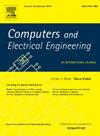Low-resolution face recognition: Review, challenges and research directions
IF 4.9
3区 计算机科学
Q1 COMPUTER SCIENCE, HARDWARE & ARCHITECTURE
引用次数: 0
Abstract
Low-resolution face recognition (LRFR) is an active research area as it is widely used in forensics and surveillance systems. A lot of effort has been put into improving the performance of the system since its inception. Recent deep neural network models have demonstrated outstanding face recognition performance on various face data sets with challenges like variations in pose, illumination, and occlusion and surpassed the performance of humans in these tasks. But, the accuracy of the LRFR method is still a problem. There is no fixed definition for considering any image as a low-resolution (LR) image. Most of the researchers have considered the image below 32 × 32 as a low-resolution image. This paper discusses various methods and algorithms used in improving the performance of low-resolution face recognition (LRFR). We have presented a thorough study of all the processes included in face recognition tasks including face detection, feature mapping, super-resolution, and face recognition. The study includes methodology along with the dataset and performance measures. We have also summarized the study of different datasets used in LRFR along with various source codes used to perform experimentation on LRFR. We have also presented a study in terms of accuracy of different LRFR methods on different dataset. Finally, challenges and research directions are presented to further carry out the LRFR research.
低分辨率人脸识别:回顾、挑战和研究方向
低分辨率人脸识别(LRFR)是一个活跃的研究领域,因为它被广泛应用于取证和监控系统。自诞生以来,人们一直在努力提高该系统的性能。最近的深度神经网络模型在各种人脸数据集上表现出了出色的人脸识别性能,应对了姿势、光照和遮挡变化等挑战,并在这些任务中超越了人类的表现。但是,LRFR 方法的准确性仍然是个问题。将任何图像视为低分辨率(LR)图像都没有固定的定义。大多数研究人员将 32 × 32 以下的图像视为低分辨率图像。本文讨论了用于提高低分辨率人脸识别(LRFR)性能的各种方法和算法。我们对人脸识别任务的所有过程进行了深入研究,包括人脸检测、特征映射、超分辨率和人脸识别。研究包括方法、数据集和性能测量。我们还总结了用于 LRFR 的不同数据集的研究,以及用于 LRFR 实验的各种源代码。我们还介绍了不同数据集上不同 LRFR 方法的准确性研究。最后,我们提出了进一步开展 LRFR 研究的挑战和研究方向。
本文章由计算机程序翻译,如有差异,请以英文原文为准。
求助全文
约1分钟内获得全文
求助全文
来源期刊

Computers & Electrical Engineering
工程技术-工程:电子与电气
CiteScore
9.20
自引率
7.00%
发文量
661
审稿时长
47 days
期刊介绍:
The impact of computers has nowhere been more revolutionary than in electrical engineering. The design, analysis, and operation of electrical and electronic systems are now dominated by computers, a transformation that has been motivated by the natural ease of interface between computers and electrical systems, and the promise of spectacular improvements in speed and efficiency.
Published since 1973, Computers & Electrical Engineering provides rapid publication of topical research into the integration of computer technology and computational techniques with electrical and electronic systems. The journal publishes papers featuring novel implementations of computers and computational techniques in areas like signal and image processing, high-performance computing, parallel processing, and communications. Special attention will be paid to papers describing innovative architectures, algorithms, and software tools.
 求助内容:
求助内容: 应助结果提醒方式:
应助结果提醒方式:


